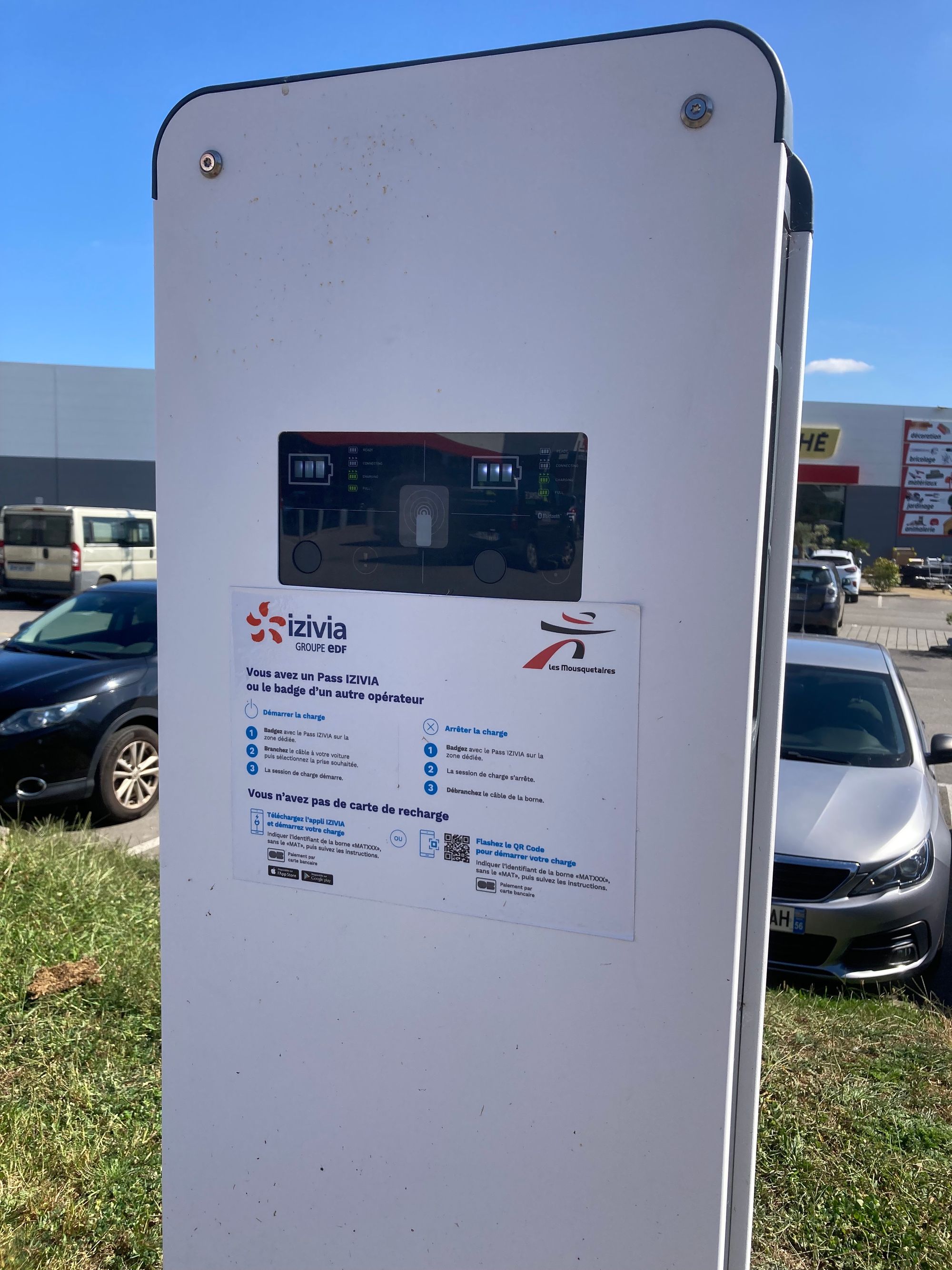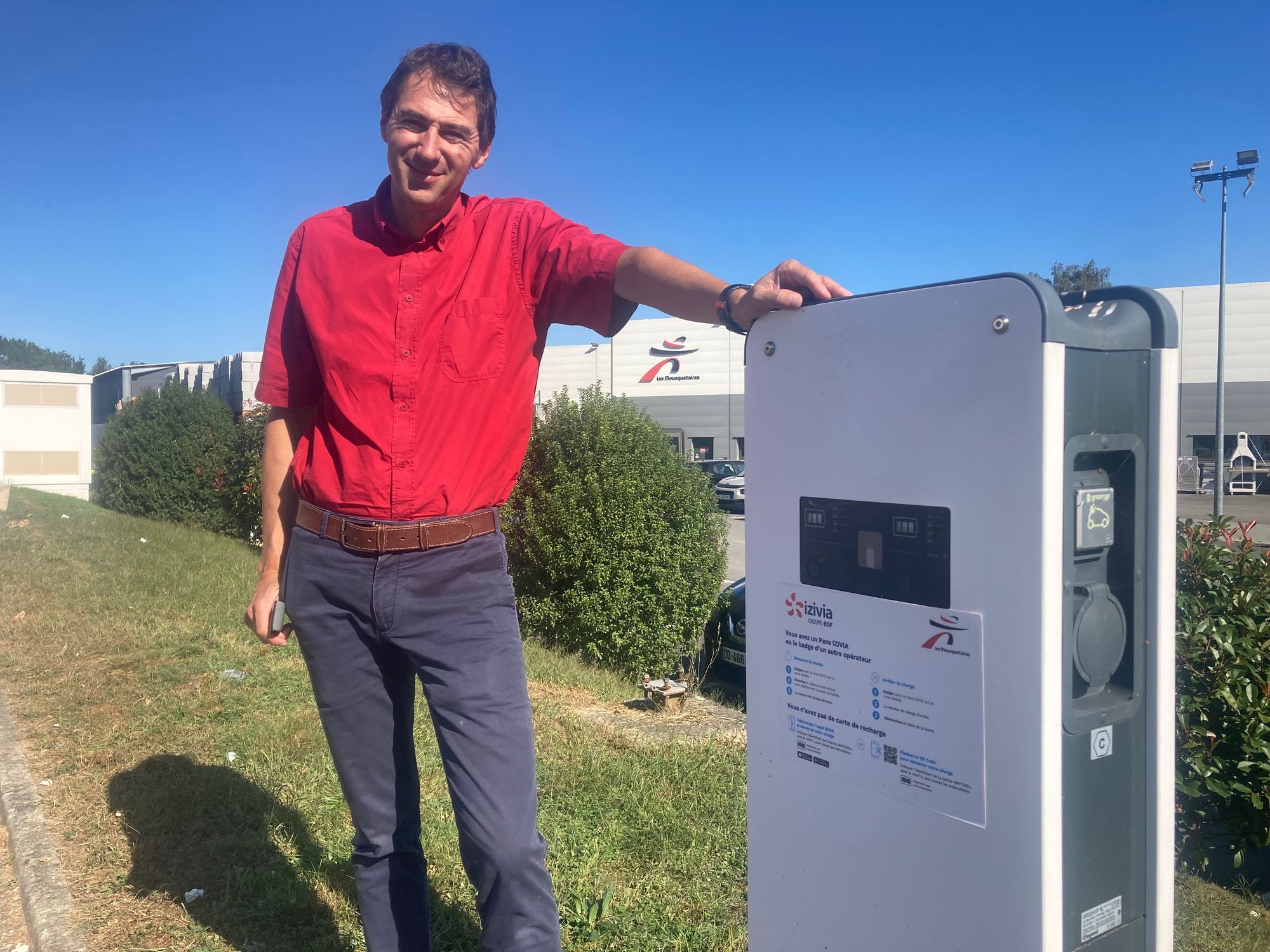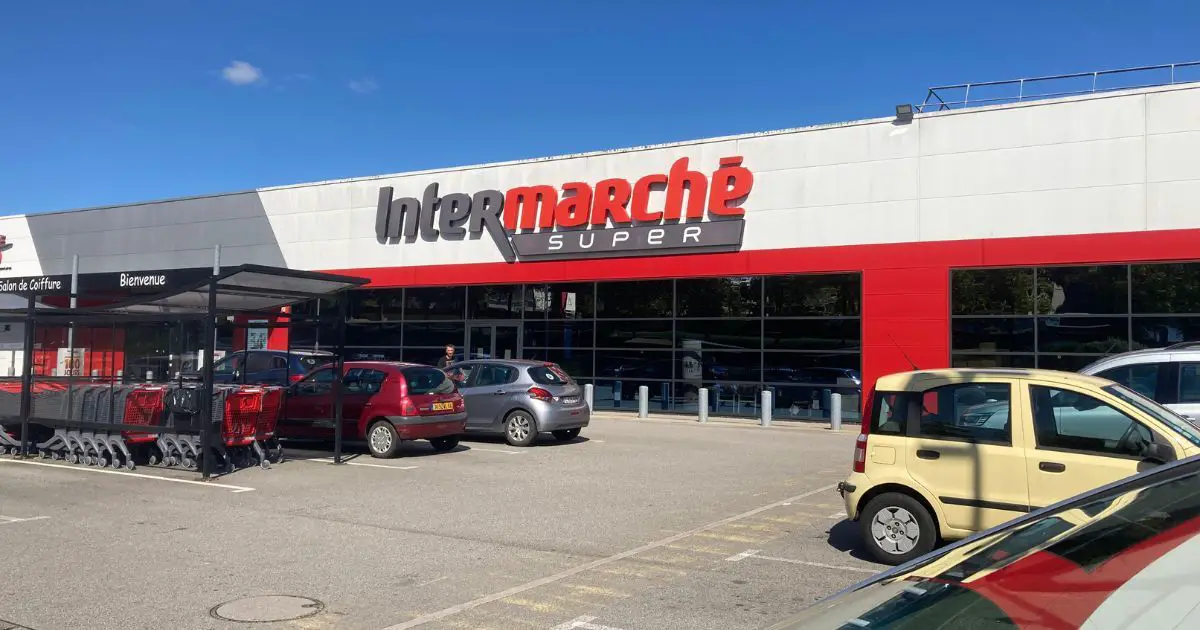In the context where Sustainable Development becomes everyone’s business, mass distribution is doing its part to meet new consumer expectations. His many environmental initiatives include director Intermarché Hennebont AND Intermarché Lorient Kerfichantinstalled and electrical terminal in its 200-space car park in a rural area. Return on investment.
“My logic is based on a simple balance: respect for the planet and budget savings. Every year I invest in improving the world we live in,” insists Sébastien Lemaire, head of the two Intermarchés in the Lorient sector. Electrical clamps, heat recovery system, LED lighting, rainwater collection… Her initiatives are numerous. “But when you’re a pioneer, there are times when you fail…” admits the business leader, not without humor.
A fault that is confirmed for electrical terminal implementation at the Intermarché Hennebont car park in January 2023. As Sébastien Lemaire explains: “In rural areas, residents travel an average of 40 km a day to get to work, shopping or anywhere a car is needed. While the purchase of electricity remains financially less attractive than thermal energy, there are not too many residents of this sector who have taken the plunge. »
How electric car terminals are invading supermarket car parks
Large retail brands are at the forefront of increasing the number of electric charging stations in their car parks.
Slow charging VS Fast charging
PUSH fat head subject put into operation in the parking lot is Izivia (EDF) equipped with two charging points with a power of 7 kW. A fairly common model in France. All Intermarchés currently benefit from the same system.
“In principle, I wanted to invest in fast charging, but I was put off when I was told that only a quarter of cars were compatible. In the region, it is clear that there are very few cars that deal with fast charging, i.e. very high-end ones, such as Porsche or Tesla…” admits the chef.
PUSH the maximum performance of the battery defines the compatibility of the charging stations with the vehicle. OnHennebont Intermarchéthe director therefore chose slow charging suitable for all electric models.
But when he set up a terminal in January 2023, even though France was in the middle of an energy crisis and the service was temporarily free (for three months), the service was not so successful… Only three to four vehicles per month.
“The reality is that in rural areas, people prefer to put their vehicles in the garage every day,” explains the businessman. The average shopping time in this 2000 m2 Intermarché is 20 minutes. “Is everyone going to bother pulling out the cable, plugging in the car, and then doing the same thing in reverse… charging three, four kilometers? continues. This large-scale charging system is a bottleneck for the security of people equipped with 100% electric vehicles, nothing more. A bit like mobile phones when they reach the end of their battery…”
For example, with this type of terminal, charging a Renault ZOE (52 kWh battery) will take an average of 5:30 to 9:30 hours…


Illusory profitability
The Law on Orientation for Mobility (LOM) requires that the parking lots of large stores have at least 5% of places equipped with electrical terminals.
According to Mr. Lemaire, “this law is contrary to reality. This device is not made in France, but often in Asia, because the raw material, electronics, are components that have to be found in mines. I’m not sure about the social and environmental idea of forcing the installation of so many devices in a parking lot… On the other hand, these terminals are interesting because it’s the future, one day we’ll have to release thermal cars, diesel will cost more and more, so we have to find a solution. .. Electricity is not necessarily the right one, but we can’t stay like this, we have to move forward. »
Today onHennebont Intermarché, the terminal uses four to five cars a month, this summer up to ten… According to the law, ten to eleven terminals should be installed in such a parking lot. » Or a cost of €150,000 (€15,000 for installation). Added to this is €100,000 to buy a transformer to generate that much electricity at the same time. Knowing that a 20-minute recharge costs the user between two and three euros…
“All this will never be profitable… so who will pay for it?” He is a citizen in his purchases. I’m still fine, I only have 200 spaces, but a car park like Leclerc, which has 1000 spaces… However, I don’t want to be left behind in what will happen tomorrow, because it’s certain that “we have to get out of the thermals. I therefore want to enable people who have this ecological awareness to play an active role in their future. It is also an image benefit, customers always like to go to a store that respects and is committed to the planet. »
Fast charging, a solution in rural areas?
In his next store in Lorient, Sébastien Lemaire plans to invest in a fast chargingif it will be compatible with all vehicles. A solution currently being developed by Les Mousquetaires, which promises a range of the cheapest high-speed terminals on the market by 2024 (0.30 cents per kW).
However, the group Les Mousquetaires does not embark on the adventure alone. He joined with the company NW, as charging station operator an independent company founded in 2007 and present in Europe and the United States. THE fast charging they have the peculiarity of having additional batteries that store electricity by sending a strong charge at a given time. Their cost: between 60,000 and 80,000 euros. “As an independent person, few people can afford such a financial burden,” comments the director. But in rural areas, most long-term charging is done at home, what about the arrival of fast terminals in supermarkets? »

